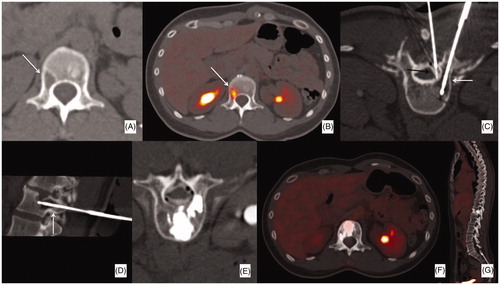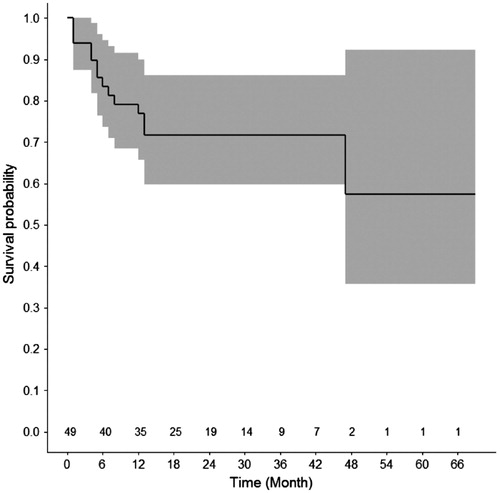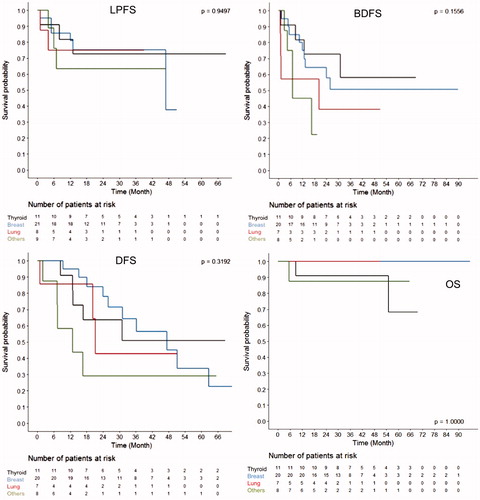Figures & data
Table 1. Patient demographics and BM characteristics.
Figure 1. Forty year old female patient with a history of breast cancer; (A, B) the patient was referred for a single, lytic (17 mm) FDG-avid metastasis of L1 (arrows). (C, D) The patient was treated with a single cryoablation probe (white arrows) combined with thermal monitoring and hydro-dissection of the epidural space (black arrow). (E) The procedure was followed by bone consolidation (i.e. vertebroplasty). (F, G) PET-CT follow-up 3 years later showed no FDG uptake in the treated area nor in other visceral or bone sites.

Table 2. Complications.
Table 3. Univariate analysis of factors predicting local recurrence at the treated site.


